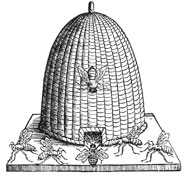Beehive Skep
Formerly known as the Beeskeep
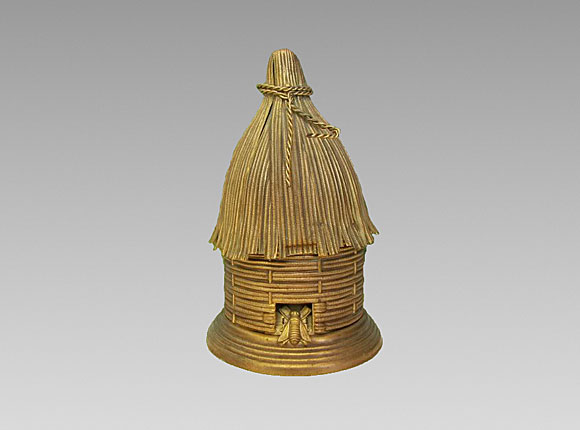
Needle Case (photographs from the Internet and eBay)
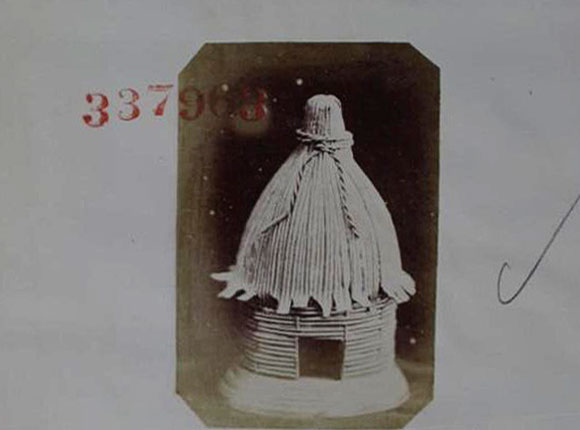
Design Representation
Design Details
Needle Case Type: |
Figural |
Patent/Registered to: |
W. Avery & Son - Redditch |
Patent/Design Representation #: |
Ornamental Class1: Metal: #337963 |
Patent/Design Registration Date: |
August 7, 1879 |
Location of Patent/Design Registration: |
The National Archives (TNA) - Kew, UK |
Reference #: |
TNA Representation - BT 43/45/337963
TNA Register - BT 44/4/337963 |
Dimensions: |
9.5 height x 5.5 diameter |
Material: |
Brass |
Name Variations: |
W. Avery & Son - Redditch |
Other Variations: |
None |
Additional Photographs
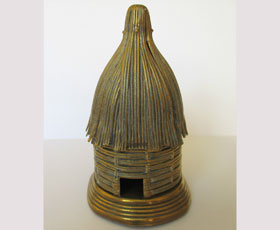
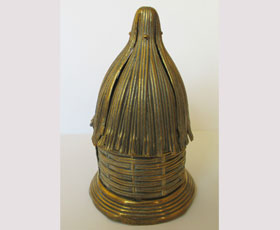
Front (missing bee in doorway and cinch on roof) and side views
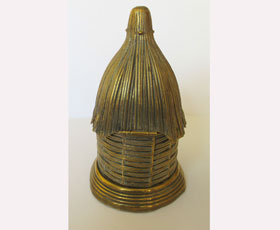
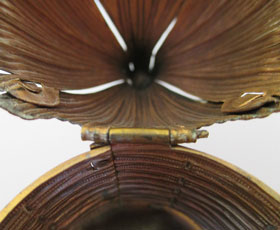
Back and interior hinge views
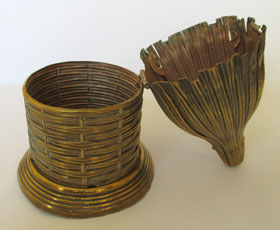
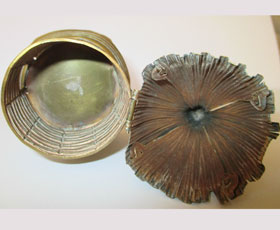
Open views
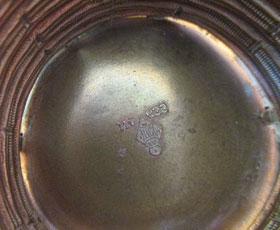
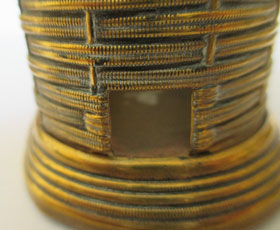
Interior detail and side detail views
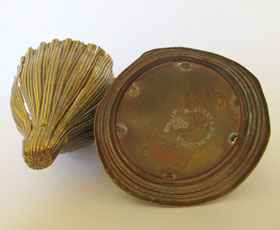
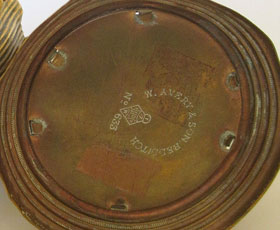
Bottom and signature detail views
Facts
Bees are important insects because they are often responsible for pollination. When a bee lands on a plant pollen attaches to its body
and as the bee moves about the pollen is transferred from one part of the plant to another. This causes plant fertilization and results in
the plants ability to produce berries, fruits and vegetables. About one third of the human food supply depends upon insect pollination
which is most often accomplished by bees. In addition bees produce honey and beeswax.
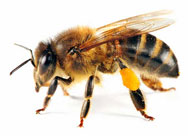
History
During the Victorian Era interest in nature increased dramatically and middle class gentleman cultivated bees not just for honey but
sometimes for science. The famous English naturalist Charles Darwin maintained a bee hive at his garden at Down House in Kent while
working on his theory of evolution by natural selection. Prior to the Victorian Period bees where kept in skeps which were dome-shaped
straw baskets under which the bees formed their honey combs. In 1860 an American amateur naturalist patented a wooden frame box that is
still used by 75% of the world’s beekeepers today.
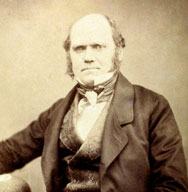
Charles Darwin in 1855
Miscellaneous
Bees are basically non-aggressive, but will sting when disturbed. Although a bee sting is usually harmless, they can be deadly for
individuals with allergies. According to the Journal of Horticulture in 1871 “A smart bee sting or two in hot, sultry weather benefits
gardeners by causing them to perspire more freely, and feel much lighter afterwards.”
